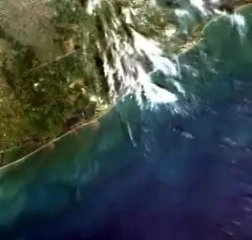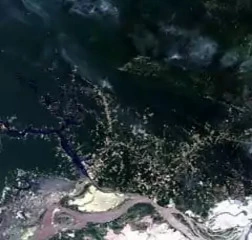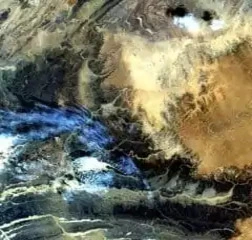Landsat 7 Satellite Images
Involving three large American governmental organizations: NASA, NOAA and USGS launched on April 15, 1999. Landsat 7 is equipped with ETM+ (Enhanced Thematic Mapper Plus), which provides a ground survey in four modes: VNIR (Visible and Near Infrared), SWIR (Shortwave Infrared), PAN (Panchromatic – Panchromatic range), TIR (Thermal infrared – Thermal infrared range).
The Landsat 7 ETM+ instrument is designed with the significant exception of the thermal infrared band, where the ground resolution has been improved from 120 to 60 m.
The ETM instrument incorporates a new 15 m panchromatic band, as well as a 9-bit analog to digital converter. The panchromatic band was added to provide higher spatial landsat 7 resolution observations, as a compliment to the 30 m multispectral measurements. In order to limit the telemetered data stream to a reasonable volume, a 9-bit A-to-D system was designed so that either the upper or lower 8 bits of the radiometry could be provided from the system. This introduces the potential for two gain states (high and low), which, particularly for dark landscapes, could increase the radiometric signal.
At an altitude of 705 km, a full surface scan by Landsat 7 takes 232 turns, or 16 days. The terrain survey takes place at approximately 10 am (± 15 minutes) according to local solar time.
Landsat 7 Characteristics
| Characteristic | Description |
|---|---|
| Participants |
|
| Launch Date | April 15, 1999 |
| Vehicle | Delta II |
| Site | Western Test Range at Vandenberg Air Force Base, California |
| Spacecraft |
|
| Communications |
|
| Orbit |
|
| Sensors | ETM+ |
| Scene size | 170 km x 185 km (106 mi x 115 mi) |
| Design life | Minimum of 5 years |
Landsat 7 Bands
| Sensor | Band number | Band name | Wavelength (μm) | Resolution (m) | Band Applications |
|---|---|---|---|---|---|
| ETM+ | 1 | Blue | 0.45-0.52 | 30 | Bathymetric mapping, distinguishing soil from vegetation, and deciduous from coniferous vegetation |
| ETM+ | 2 | Green | 0.52-0.60 | 30 | Emphasizes peak vegetation, which is useful for assessing plant vigor |
| ETM+ | 3 | Red | 0.63-0.69 | 30 | Discriminates vegetation slopes |
| ETM+ | 4 | NIR | 0.77-0.90 | 30 | Emphasizes biomass content and shorelines |
| ETM+ | 5 | SWIR 1 | 1.55-1.75 | 30 | Discriminates moisture content of soil and vegetation; penetrates thin clouds |
| ETM+ | 6 | Thermal | 10.40-12.50 | 60*(30) | Thermal mapping and estimated soil moisture |
| ETM+ | 7 | SWIR 2 | 2.09-2.35 | 30 | Hydrothermally altered rocks associated with mineral deposits |
| ETM+ | 8 | Panchromatic | 0.52-0.90 | 15 | 15 meter resolution, sharper image definition |


